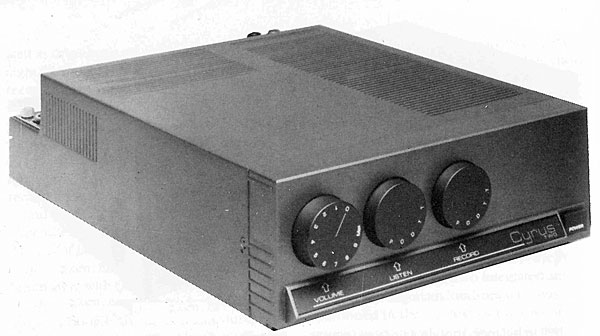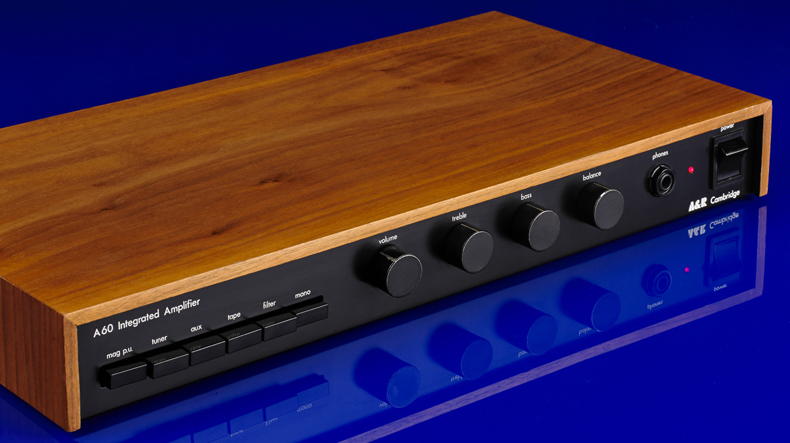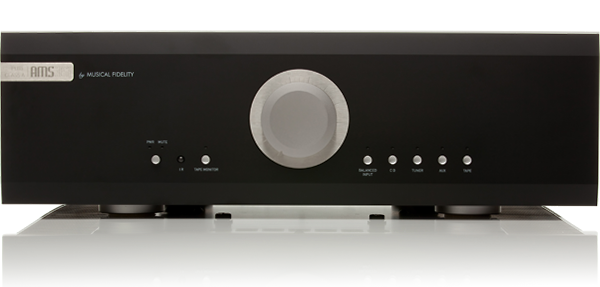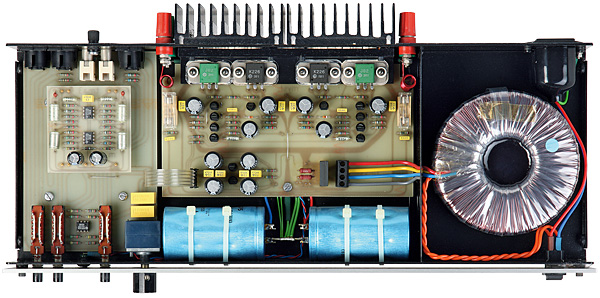When NAD’s 3020 initially arrived in the early 1980s, it blew past all other cheap integrateds, as well as innumerable amps costing much over twice as much. The hi-fi market cried out for something with a comparable astonishing mix of price and performance, but at a higher level, over the next few years. Then, in 1985, with the new Cyrus Two, Mission finally delivered the world what it had been waiting for.
Here was a compact (210x 90x 340mm) amplifier that packed a far more powerful punch than it had a right to, at a lower price than you’d anticipate, and it was one of Huntingdon’s biggest ever successes. As a result, it served as both a natural progression from a NAD and an excellent entry point into the upper end. The Two was twice as expensive as its smaller Cyrus One brother, selling for £299 for the majority of its life. It was a radically revised version of its capable twin, despite its superficial resemblance – fascia legend apart.
The 50W RMS per channel design provided an additional 20W of power as well as twice the output current driving capability. The disc stage was also heavily altered, with better sounding circuitry and a signal-to-noise ratio of at least 11dB. Internal construction was similar to that of the Cyrus One, with a single printed circuit board and a massive toroidal mains transformer. In Class AB mode, fast complementary power transistors were used to produce direct coupled output. The rear connections were all RCA phonos pointing upwards on a horizontal ledge, which was fantastic for access but a ticking timebomb of a dust trap in the NAD 3020 manner. Two sets of phono connections for MM and MC (a la Audiolab’s 8000a) were provided, as well as a toggle to switch between the two. By 1980s standards, the inputs were extensive, with five options available.
The Two also brought an interesting new element to the party: a connector for the £200 external PSX power supply, which boosted the amplifier’s sonics significantly. The huge Cyrus is a charming performer who is both clearly flawed and incredibly talented. Basically, it takes any audio you feed it and ejects it through your speakers as if there’s no tomorrow.
It’s a frantic listen that grabs rhythms and dynamics by the short and curlies, and grips like nothing this side of a Naim NAP250. It’s a very delightful listen with smooth ancillaries that appears to turbocharge everything it touches, making everything sound bigger, brighter, bolder, and larger than life. Even slow, unresponsive speakers are pounded into submission and begin to boogie as a result of its hold. The bass isn’t particularly powerful, but it’s pleasantly smooth.
The disadvantage is that it produces a loud, almost chrome-plated sound that requires careful matching and tuning to eliminate. With a smooth vinyl source, for example, the amp’s excellent phono stage allows the amp’s natural abilities to come through with a quick, clear, and well balanced sound. However, with a cheap CD player, it’s Paracetemols all the way and an early bedtime. The secret is to utilise high-quality mains cable as well as silky silver speaker wires and interconnects. It really sings when paired with even-handed loudspeakers (like Mission’s own 752s).
Both Cyrus amplifiers received minor component improvements and adjustments on a regular basis, however they may be separated into three series. The initial version, released in 1985, had a plastic shell with a push-button power switch beneath a pilot LED. The second series, which came out a few years later, was distinguished by the usage of a metal case and a backlit Cyrus emblem instead of an LED indicator. In 1990, the third series debuted, which included a non-backlit Cyrus logo (with no mention of Mission), a flip-up power button, a tiny round LED pilot bulb, a dual-ganged volume/balance control, and switchable muting. The better the sound, the later the model.
The final years of manufacture saw significant acoustic improvements, making the last of the line the most desirable. The £399 Cyrus Two was superseded by the £499 Cyrus Three, which was better packed but sounded worse. The phono stage was the biggest letdown, since it seemed to lag well behind its predecessor’s excellent standards. Cyrus Twos may now be found for anywhere between £100 and £400, depending on their age and condition, giving them excellent value for money. If you’re looking for thrills, they still beat many of today’s sub-£1,000 integrateds, which is an incredible achievement.







